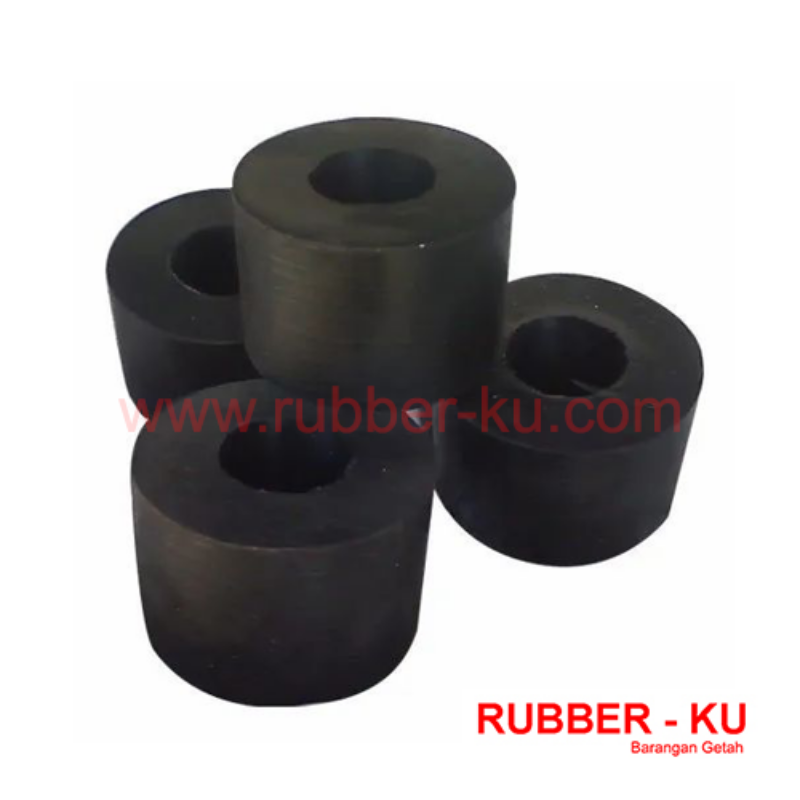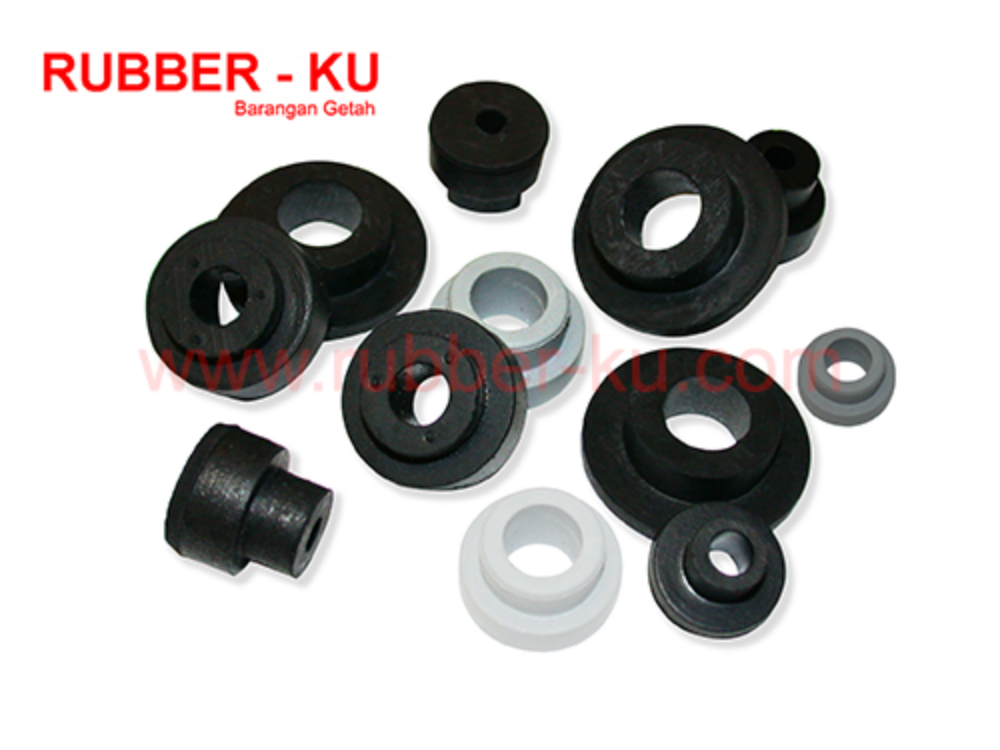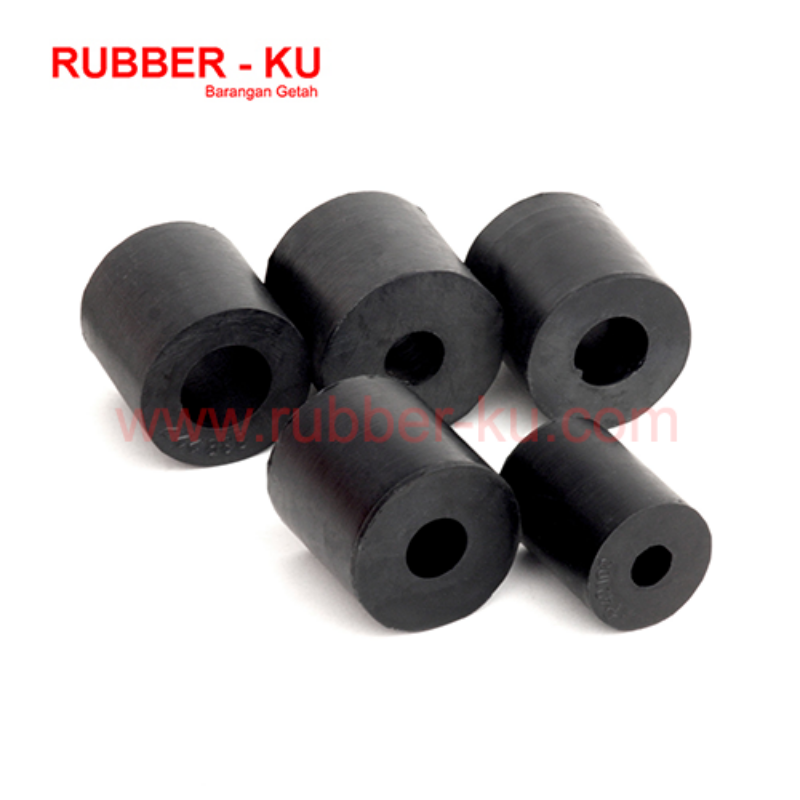Product Description
Rubber Bush | Rubber Cone | Pivot Bush | Cylindrical Bush
RUBBER-KU rubber bush to prevent wear and damage, connected elements must not move or vibrate, which is a crucial part of a rubber bushing's function. Rubber bushings are durable tools that can tolerate high tension and severe deformation.
There are numerous variations of rubber bushings. They are made of both natural and synthetic rubber. Since natural rubber and synthetic rubber have different properties, the type of rubber chosen will dictate how the bushing can be used. They are often made into an annular cylinder shape and enclosed in outer tubes or metal enclosures. An internal crush tube shields the bushings in other applications from crushing.
Types of Rubber Bushings
Cone Rubber Bushings
A type of vibration isolator known as a cone rubber bushing or conical bushing is a contract between two components. This bushing is frequently used in submersible pumps. It is created with ceramic materials and cutting-edge procedures, and it is also evaluated on several different factors. This bushing, which comes in several sizes, is well-liked for its dependability and excellence. Conical rubber bushings are created using silicone rubber with a lower compression set. The silicone material can endure extremely high temperatures and resist grease and oil. Conical bushings have a high load capacity and are excellent for compression and shearing loads.
Cylindrical Bushes
Cylindrical bushes are available as press-fit (flanged), push-fit (bushed), and loose fits requiring nuts, bolts, and washers. They are good for axial, radial, and torsion loads. Although they have numerous additional uses, such as in sugar beet raising machines, field sprayers, road sweepers, and racing cars, cylindrical bushes are principally employed for steering systems in road vehicles.
Pivot Bush
The purpose of this kind of bush is to provide the least amount of torsion resistance. Therefore, only one of the armatures is attached to the elastomer, and a sufficient permanent lubricant guarantees very little torsional resistance between the elastomer and the other armature.
Flanged Bushing
A sleeve bushing with one end flanged and extending laterally outward is known as a flanged bushing. They are made of ethylene propylene diene monomer (EPDM) or styrene butadiene rubber (SBR). The flanged portion of flanged bushings functions as a washer, allowing them to support axial loads. There are several industrial and anti-vibration uses for a flanged bush.
Spherical Bushes
Spherical bushings are self-aligning plain bushings with spherical sliding surfaces on their inner and outer rings. They can simultaneously support a heavy axial load and a large radial load. In addition, they can correct for misalignment and are made for gradual swinging motion.
Applications of Rubber Bushings
- Rubber bushings are frequently preferred to solid connections because they produce less noise and vibration. They may also render lubrication between two parts unnecessary.
- Rubber bushings, as part of a vehicle's suspension system, can negatively impact how the car handles, particularly during cornering and braking.
- Rubber bushings are frequently employed in the manufacture of automobiles. Typically, they are found in gear sticks, double wishbone suspensions, anti-roll bars, shock absorber mountings, and internal combustion engines in some autos.
- They are also employed in skateboards, where they help turn the board and tilt the trucks. Rubber bushings act as another way to distribute stress within a structure and lessen strain.
- These bushings can also be abrasion resistors, resonance isolators, or dampers. Rubber bushings are seals that can be used with cables, pipelines, and tubing.
Advantages of Using Rubber Bushes
Eliminate the need for lubrication
Rubber bushings eliminate the requirement for lubrication in the gap between two components.
Reduced machinery wear
Rubber bushings keep parts from rattling against one another, reducing wear and tear on the equipment and providing a safer working environment for the employees' eardrums.
Lessen noise
Rubber bushings lessen noise in industries from mechanical contact.
Can be custom-made
Rubber bushings can be custom-made so they can work at their best in their intended application.
Reduced maintenance
Rubber bushings require less maintenance because they have a long, maintenance-free service life and can be used in one's products and machines.
Contact Details
Rubber Bush | Rubber Cone | Pivot Bush | Cylindrical Bush
| Supplier | : | RUBBER-KU RUBBER PRODUCTS |
| : | rubberku@gmail.com | |
| Phone | : | +603 5191 7961 |
| Fax | : | +603 5191 5961 |
| Location | : | Selangor, Malaysia |
Enquiry Box
Other Products




 Loading...Please Wait.
Loading...Please Wait.